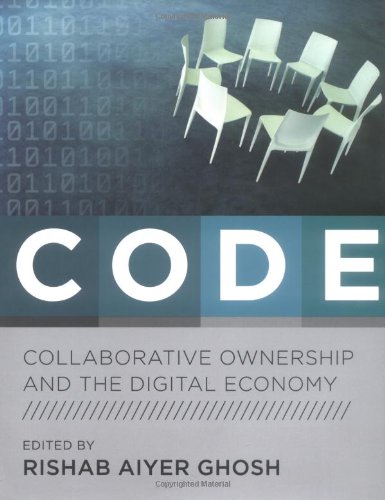Rishab Aiyer Ghosh9780262072601, 0-262-07260-2
Open source software is considered by many to be a novelty and the open source movement a revolution. Yet the collaborative creation of knowledge has gone on for as long as humans have been able to communicate. CODE looks at the collaborative model of creativity—with examples ranging from collective ownership in indigenous societies to free software, academic science, and the human genome project—and finds it an alternative to proprietary frameworks for creativity based on strong intellectual property rights. Intellectual property rights, argues Rishab Ghosh in his introduction, were ostensibly developed to increase creativity; but today, policy decisions that treat knowledge and art as if they were physical forms of property actually threaten to decrease creativity, limit public access to creativity, and discourage collaborative creativity. ”Newton should have had to pay a license fee before being allowed even to see how tall the ‘shoulders of giants’ were, let alone to stand upon them,” he writes. The contributors to CODE, from such diverse fields as economics, anthropology, law, and software development, examine collaborative creativity from a variety of perspectives, looking at new and old forms of creative collaboration and the mechanisms emerging to study them. Discussing the philosophically resonant issues of ownership, property, and the commons, they ask if the increasing application of the language of property rights to knowledge and creativity constitutes a second enclosure movement—or if the worldwide acclaim for free software signifies a renaissance of the commons. Two concluding chapters offer concrete possibilities for both alternatives, with one proposing the establishment of ”positive intellectual rights” to information and another issuing a warning against the threats to networked knowledge posed by globalization. |
Table of contents :
1 Why Collaboration Is Important (Again)……Page 14
2 Imagined Collectivities and Multiple Authorship……Page 26
3 Modes of Creativity and the Register of Ownership……Page 42
4 Some Properties of Culture and Persons……Page 58
5 Square Pegs in Round Holes? Cultural Production, Intellectual Property Frameworks, and Discourses of Power……Page 74
6 Who Got Left Out of the Property Grab Again? Oral Traditions, Indigenous Rights, and Valuable Old Knowledge……Page 88
7 From Keeping “Nature’s Secrets” to the Institutionalization of “Open Science”……Page 98
8 Benefit Sharing: Experiments in Governance……Page 126
9 Trust among the Algorithms: Ownership, Identity, and the Collaborative Stewardship of Information……Page 140
10 Cooking-Pot Markets and Balanced Value Flows……Page 166
11 Coase’s Penguin, or, Linux and the Nature of the Firm……Page 182
12 Paying for Public Goods……Page 220
13 Fencing Off Ideas: Enclosure and the Disappearance of the Public Domain……Page 248
14 A Renaissance of the Commons: How the New Sciences and Internet are Framing a New Global Identity and Order……Page 272
15 Positive Intellectual Rights and Information Exchanges……Page 300
16 Copyright and Globalization in the Age of Computer Networks……Page 330
Contributors……Page 350
Index……Page 356 |

Reviews
There are no reviews yet.